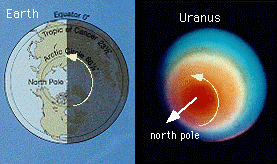This is an drawing of the earth and an image of Uranus.
Image from: The Atmosphere, 5th edition
A Uranus summer = a Uranus day
In this picture, the Earth and Uranus are both viewed from the top. In the picture of the Earth, the sun is shining from the side. The picture shows that part of the north pole is in daylight and part of the north pole is in darkness. This is because Earth spins (in 24 hours) at right angles to the sun's rays, and for 12 hours half of the earth is dark.
Unlike the Earth, Uranus spins (in 10 hours) with the north pole facing the sun. So, in the picture, the north pole of Uranus is never in the dark. This means that daytime on Uranus lasts for a long time.
You might also be interested in:
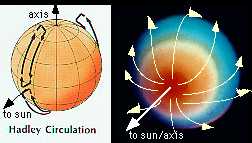
The weather on earth can be described this way: air rises where it is warm (at the equator), and moves to where it is colder, (at the north pole). Because Uranus lies on its side, with the north pole facing
...more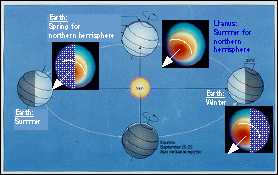
As a planet orbits the sun, if its rotation axis is tilted, the portion that is tilted toward the sun will receive an excess of sunlight and energy (summer), while the hemisphere which is tilted away from
...more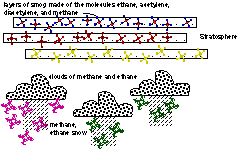
Besides methane, Uranus' atmosphere contains even more complex molecules. These molecules form layers of smog over the clouds of Uranus, as shown in the picture.
...more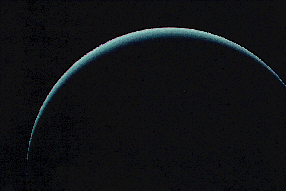
The mesosphere of Uranus is a region of balance between warming and cooling. That essentially means that nothing happens there. Except for diffusion, the atmosphere is still. Upper reaches of the atmosphere,
...more
As on Earth, the atmosphere of Uranus consists of a troposphere, stratosphere, mesosphere, and thermosphere. The troposphere is the region where the visible clouds are to be found. The stratosphere, as
...more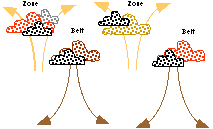
On Uranus, as on Jupiter, the winds in the belts and zones blow first in one direction, then in the other direction. The clouds rise up in a belt, and drop down in a zone, as shown in this picture. This
...more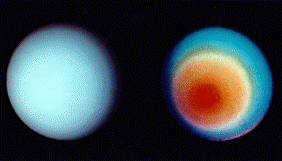
The clouds on Uranus, like Jupiter, are divided into stripes. On Uranus the stripes are hard to find. The left picture shows the north pole of Uranus. In this picture only the smog can be seen. The clouds,
...more
